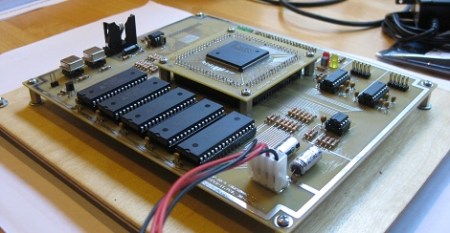
There’s a treasure trove of excellent yet ancient games made for DOS that are nearly unplayable on modern computers. Awesome games like the Lucasarts SCUMM adventures, the original Civilization and SimCity, Starflight, the King’s Quest series and even Leisure Suit Larry aren’t played much today because of the near impossibilities of getting them to run on modern hardware or setting up an emulator with proper sound.
[Patrick] has been doing his best to help out classic gamers with an x86 emulator for the Raspberry Pi. It’s designed to be a very capable DOS box with 20 MB of extended memory, a 640×480 display with 256 colors, an ~20MHz 486 emulated CPU, and a Soundblaster 2.0 sound card.
There’s still a lot of work to be done, but outside of finding a 20-year-old computer, emulation on a Raspberry Pi it probably the most authentic DOS gaming experience you’ll get.

















